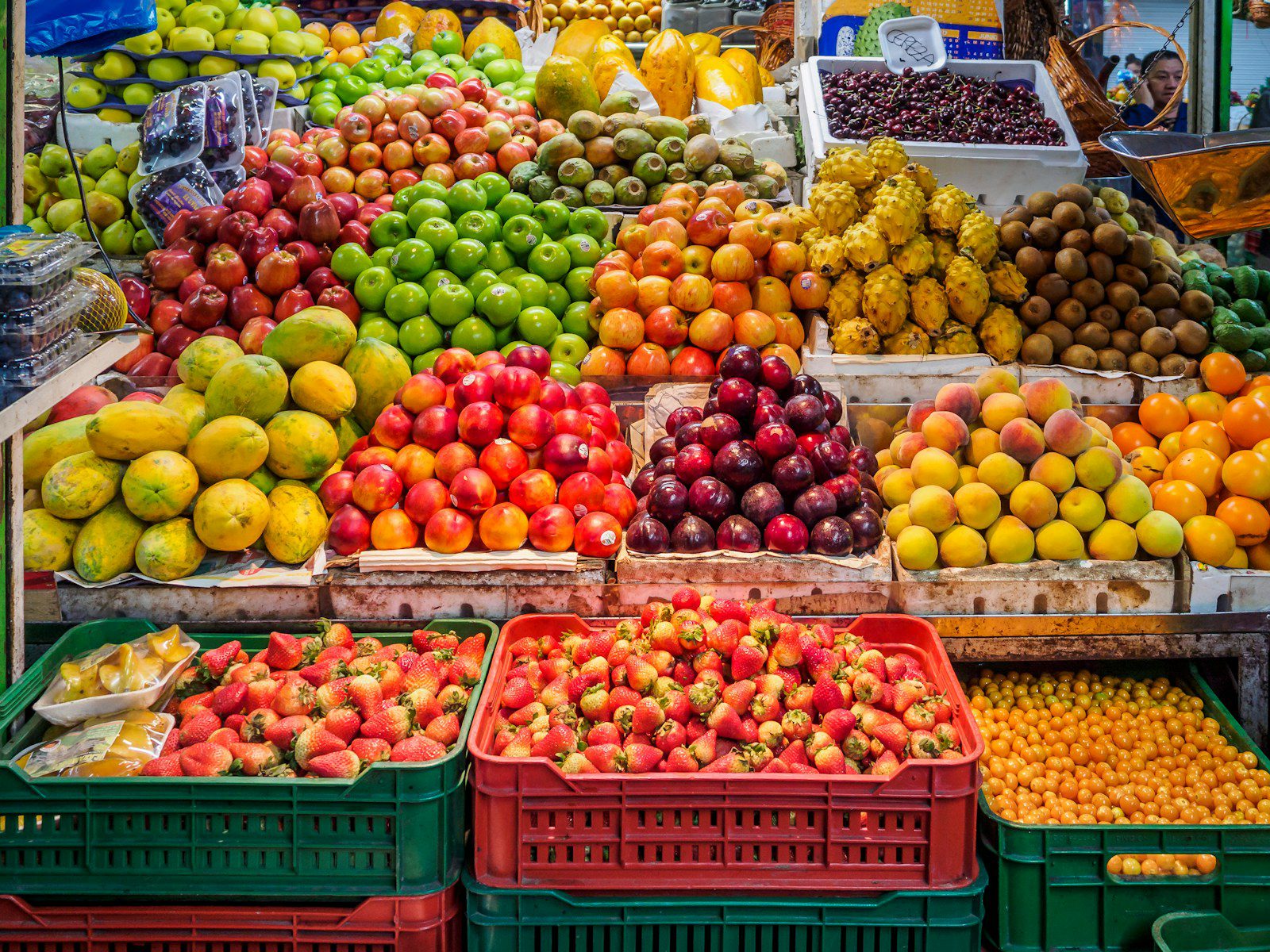Take the Quiz:
Imagine this…
It’s a hot summer day and you reach into the fridge for a delicious snack of fresh, cold strawberries when, all of a sudden, you notice every food waste warrior’s mortal enemy, MOLD, growing on your fresh berries! Maybe your first feeling is disgust. Instinctually, you toss the moldy berries in the compost bin.
Later on, frustration and guilt set in. You just bought those berries last week! They were on a buy-one-get-one-free sale and the plump fruits looked delicious, so you tossed two packs in your cart and were on your way. The days since have been busy, and you ended up eating out of the house more often than planned. You used the first pack easily, but now you’re left with a bunch of moldy strawberries. With food prices so high these days, a pack of strawberries can seem like gold… only, this gold is now sitting at the bottom of your compost bin.
And you’re not alone. Wasted food is filling kitchen trash cans all across America at this very moment. Did you know that in the United States, around 50% of food waste comes from individual consumers, like you and me? That’s 42.8 million tons of food annually, most of it perfectly edible. And when we waste food, we waste everything that goes into growing, harvesting, cooling, packing, and transporting that food.
That’s right! Your strawberries had a whole life before they ended up in your cart, fridge, and eventually your compost bin. (Check out the Extraordinary Life and Times of the Strawberry to see what gets wasted when you toss your berries.)
Strap in and let’s rewind the clock to see what we can do to help you save money and prevent those berries from getting moldy in the first place!
Know before you go!
It’s that time of the week again — grocery day! You may not know it yet, but your food waste reduction journey starts here.
Most of us don’t plan to waste food. Throwing food away is often the last step in a long series of food-related actions and decisions that begins even before we go to the store. Along that chain, we are making decisions about what to buy, how to store it, when and how to cook it, and, often, when and how to throw it away. Reducing food waste means that we have to actively manage our food across all of those actions to prevent it from ending up as waste. That can feel overwhelming.
But don’t worry, with a bit of planning, you can stop food waste before it happens.
Step 1: Make a meal plan
Food waste often happens when you purchase food without a specific plan for when and how it will be used. If you plan out your meals, and shop according to that plan, research shows you’re more likely to eat it all before it goes bad. (Check out this research paper for details).
ACTION ITEM: Use this meal planning worksheet to create your plan for the week. Print the PDF on scrap paper, or use it as inspiration to create your own meal plan template. Join our food waste challenge to get more tips on saving food waste and personal feedback and coaching on your meal planning process!It might feel like extra work, but having a plan will save you time and brain space throughout the week. You can check out our Zero Waste Meal Plan or Zero Waste Chef for meal and recipe ideas!
Tips for planning:
- Create a list: As you’re building your meal plan, create a shopping list with quantities based on the number of meals using the ingredient. You’ll need enough food to carry through on your plan, but not so much that you have a full fridge a week later. If you’re someone who usually wings it at the grocery store (I’m one of those people), give shopping lists a try! Research shows that shoppers who use and stick to lists–only about 25% of people–spend less on groceries, make fewer shopping trips, and are less susceptible to impulse buys. Shopping with a list can save a family of four around $1,500 per year!
- Shop in your fridge and pantry first: You probably already have ingredients at home that need to be used up before they go bad. Try to think of a meal to make with those items and add them to your meal plan! Stuck? Use our Fridge Wizard tool for some creative inspiration.
- Rely on fan favorites: Create a running list of your favorite meals and recipes on a list somewhere in your kitchen (a piece of scrap paper on your fridge, a whiteboard/chalk board) or in the notes app on your phone. When you’re meal planning for the week, start with these go-to meals. It will make the planning process faster and less overwhelming!
Bonus Tip! Let nature guide you: When choosing ingredients, consider if there are ways to incorporate in-season produce grown locally. Local produce is usually available in smaller quantities, so you’ll have more control on quantity, and in season produce is generally cheaper than items that need to be shipped far distances from other states or countries.
Step 2: Where to Shop & Get Food
We all have a go-to place where we buy food. For many of us, the local supermarket may be the default option, but it’s far from the only option when it comes to buying food! Ann Arbor is full of locally-owned food businesses, many of which share your goal of fighting food waste and accept many forms of payment including EBT, WIC & other food access programs.
Here are some options of local businesses that are committed to reducing food waste:
Argus Farm Stop donates extra produce to Food Gatherers, a local food bank and food rescue program, and to local farmers for animal feed. Any food that is no longer fit for consumption is composted. Argus’ food access division also works with organizations such as Groundcover to donate other food like bread and pastries.
*Argus accepts EBT and offers Double up Food Bucks
Purchasing food locally means shorter supply chains and fewer opportunities for waste. When food is being harvested across the country (or world) from where it’s consumed, there is a significant need for storage solutions that have to preserve food for thousands of miles and several weeks. If you can’t make it to the Farmers Market, another way to get local produce is by participating in a Community Supported Agriculture (CSA) program. Check out this list of local CSA options!
*The Farmers Market accepts EBT and P-EBT, WIC, WIC Project Fresh & Senior Project Fresh, and offers Double up Food Bucks
People’s Food Coop and By the Pound
Shopping at bulk stores allows you to buy exactly how much you need — saving you money while reducing food waste.
*PFC accepts EBT & offers Double up Food Bucks, and By the Pound accepts EBT
Fun fact: Recent research from the University of Michigan suggests that people who buy groceries online tend to waste less food compared to traditional, in-person grocery shopping because they tend to shop more frequently and in smaller quantities. Similarly, meal kit services, which deliver pre-portioned ingredients and take the hassle out of planning your weekly menu, also reduce food waste and have a lower carbon footprint than traditional grocery shopping. But, keep in mind that buying groceries online and meal kit services both create high amounts of packaging waste. If you prefer shopping online, consider local options of businesses committed to reducing food and packaging waste like Argus Weekly Produce Box (accepts EBT) and The Hungry Locavore; or Misfits market which works with farmers to rescue food that might otherwise go to waste.
*If you are facing food insecurity and unable to shop, you can find a map of food access resources from Food Gatherers here.
Step 3: At the Store
You have your list, you’ve researched the best local options, and now you’re ready to shop! The grocery store is where we commit and put our plan into action. Shopping intentionally is one of the easiest ways to cut food waste and save money.
- Stick to your list & don’t shop hungry: You’re more likely to make impulse purchases based on what sounds good, rather than what you need, when you shop hungry. Eat a snack before you head out on your shopping trip, and then stick to the list you made earlier, as much as possible, to avoid overbuying.
- Avoid packaging: Choosing “loose” fruits, vegetables, grains and other foods over pre-packaged items allows you to have better control over the quantity you purchase, and helps you buy fresher foods while reducing waste from packaging. Many stores have sections that allow you to buy in “bulk,” and bring your own container. Check out our Ann Arbor City Guide to see which stores in your area have unpackaged food. If you know of any that aren’t on the map yet, please let us know, we need your help to make it more convenient to shop zero waste!
- Choose imperfect foods: Purchasing imperfect produce can help reduce food waste beyond the walls of your home kitchen. While it may look different, imperfect produce is just as nutritious and delicious as the “regular” stuff and often can be found at discounted prices. Try the FlashFood app or the discount shelves of your local store to keep food out of the landfill!
- Bonus Tip! Be wary of bargains: There are many marketing gimmicks that encourage you to buy more than you need, but remember that deals only save you money if you eat all the food before it spoils!
EXTRA RESOURCES:
- Grocery shopping can look different depending on the community you live in. Learn about food access and food apartheid here: Food Apartheid: Racialized Access to Healthy Affordable Food
- If you want to dive deeper into meal planning, checkout the Plan to Eat podcast, available on Apple Music and Spotify. We recommend episodes 31 & 32: Meal Planning Tips (parts 1 & 2), as well as episode 72: How Meal Planning Can Evolve.
Research and content contributions from Azella Markgraf, Annabel Wilcox, Bailee Duke, Sofia Berkowitz and Juna Saito.
SUMMER GAME CODE: 1500PERFAMILY

